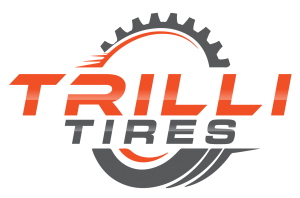Winter tires, an essential component of safe winter driving, come in various designs, with one of the most intriguing being directional winter tires. Unlike all-season or summer tires, winter tires possess unique characteristics that enhance their performance in cold and slippery conditions. In this article, we delve into the science behind directional winter tires and explore why they are a crucial choice for those who face harsh winter weather.
What Makes a Tire Directional?
Directional winter tires are distinguished by their distinctive tread pattern. Unlike symmetrical or asymmetrical tires, directional tires have a tread pattern designed to rotate in only one direction. This unidirectional design has several advantages, primarily related to traction and handling in winter conditions.
The tread pattern of directional winter tires features deep grooves and aggressively slanted or “V”-shaped channels that create a clear, arrow-like direction of rotation. This design aids in effectively pushing away slush, snow, and water from the tire’s contact patch, ensuring that the tire maintains maximum grip with the road surface.
Enhanced Hydroplaning Resistance
One of the most significant advantages of directional winter tires is their improved resistance to hydroplaning. Hydroplaning occurs when a layer of water builds up between the tire and the road surface, causing a loss of traction and control. The directional tread pattern’s ability to channel water away from the tire’s path reduces the risk of hydroplaning, making these tires exceptionally safe in wet and slushy conditions.
The V-shaped grooves in winter tires effectively funnel water and slush outwards, preventing it from pooling in the tire’s path. This enables the tire to maintain constant contact with the road, resulting in better control and responsiveness, even in adverse weather conditions.
Exceptional Snow Traction
When winter unleashes its fury with heavy snowfall, directional winter tires shine. The aggressive tread pattern, combined with the unidirectional design, allows these tires to bite into snow and provide exceptional traction. The V-shaped channels act like snowplows, pushing snow outwards and preventing it from packing into the tread.
This enhanced snow traction is invaluable when navigating snowy roads, as it ensures your vehicle can start, stop, and turn with confidence. Whether you’re climbing a snow-covered hill or navigating a winding, snow-covered road, directional winter tires excel in maintaining grip and stability.
Optimized Ice Grip
Icy roads pose a significant challenge during winter, and directional winter tires are well-equipped to tackle this hazard. The specialized tread pattern features small, sharp edges within the grooves that bite into icy surfaces. These edges provide additional grip on ice, enhancing the tire’s overall performance in freezing conditions.
Moreover, the continuous rotation of the tire helps maintain consistent contact with the icy surface, preventing sliding and promoting better stability. This means that drivers can feel more confident when driving on icy roads, knowing that their winter tires are working diligently to keep them safe.
Noise Reduction and Ride Comfort
While directional winter tires excel in performance, they also offer a quieter and more comfortable ride compared to some other winter tire types. The unidirectional design reduces road noise by channelling air and sound waves away from the tire. This leads to a quieter and more pleasant driving experience, especially on highways and well-maintained roads.
Additionally, the reduction in road noise can contribute to reduced driver fatigue, making long winter journeys more comfortable. For those who value a smooth and quiet ride during the colder months, winter tires are an excellent choice.
Maximizing the Benefits
To maximize the benefits of directional winter tires, it’s essential to ensure they are installed correctly. Directional tires are designed to rotate in a specific direction, indicated by an arrow or other markings on the tire’s sidewall. To maintain their performance and safety advantages, it’s crucial to mount them correctly, ensuring that all four tires rotate in the intended direction.
Regular maintenance, such as checking tire pressure and tread depth, is also essential to ensure optimal performance throughout the winter season. Keeping your directional winter tires in top condition will provide you with the best possible traction, safety, and peace of mind.
Final Words
Directional winter tires are more than just a unique-looking option; they are a key element in enhancing safety and performance during the winter months. Their innovative tread pattern, designed for maximum water and snow dispersion, coupled with excellent ice grip, makes them a top choice for drivers facing harsh winter conditions.
When it comes to choosing the right winter tires, understanding the science behind directional winter tires can help you make an informed decision that prioritizes safety and control. So, as winter approaches, consider the advantages of directional winter tires to ensure you’re prepared for whatever challenges the season brings.
Discover TrilliTires in Richmond Hill
When it’s time to equip your vehicle with newtires, look no further than TrilliTires in Richmond Hill. Our expert team is dedicated to helping you find the perfect set of winter tires to enhance your safety and performance during the winter season. Contact us today to schedule a consultation and experience the difference winter tires can make in your winter driving.
